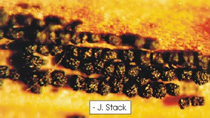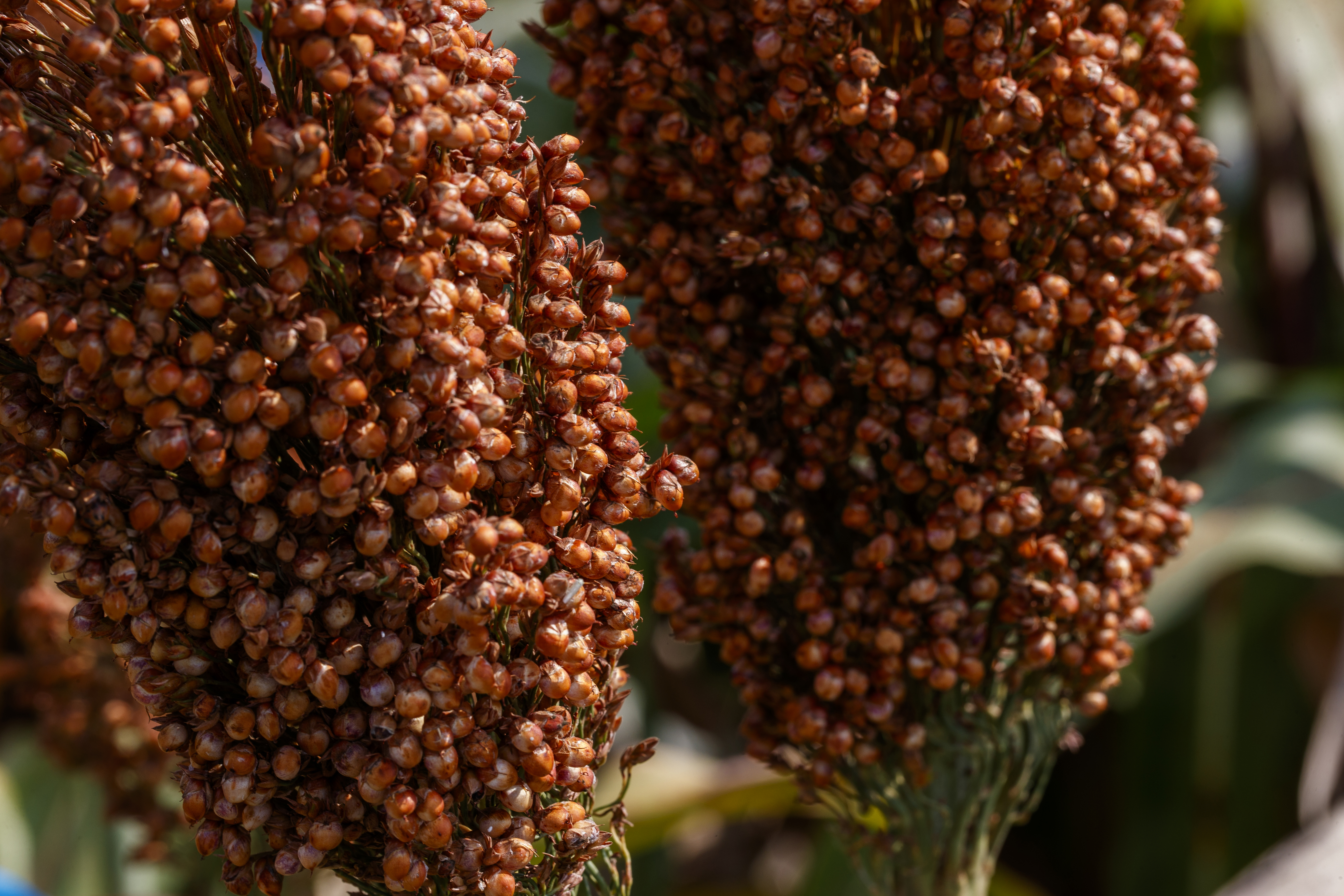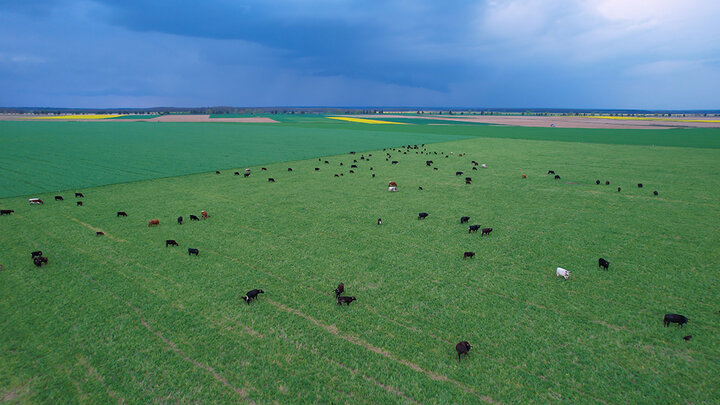By Jim Stack, former UNL Extension Plant Pathologist
Pathogen
Ramulispora sorghi (Ell. & Ev.) L. S. Olive & Lefebvre. Fungal structures: conidia produced from a sporodochium and sclerotia. Sooty Stripe is common throughout the sorghum producing areas of the USA occurring every year to varying degrees. Sooty Stripe was severe in several southern Nebraska counties (from Red Willow to Pawnee as far north as highway 6) in 1997 and 1998. In 1998 a double epidemic of Sooty Stripe and Zonate Leaf Spot occurred in many fields. The pathogen survives as sclerotia in plant residue and to some extent free in the soil. The Sooty Stripe pathogen also infects other Sorghum species that may serve as a reservoir of inoculum.



Disease Symptoms
Sorghum hybrids vary in susceptibility to Sooty Stripe. The first visible symptoms are the appearance of small non-diagnostic lesions on the lower leaves. These lesions elongate and form the typical diagnostic Sooty Stripe lesions having pronounced reddish-brown lesion margins (on most hybrids) with yellow halos. Lesions may expand and run together, resulting in serious leaf blight. Within the center of mature lesions, rows of very small black bodies form; these black sclerotia give the lesion a "sooty" appearance and can be rubbed from the surface leaving a smudge on your finger. When the weather is favorable the disease progresses up the plant and lesions may occur on all leaves of the plant.



Favorable Weather Conditions
The exact conditions considered ideal for disease development are uncertain; however, moderate to high temperatures with periods of high relative humidity are associated with epidemics. The leaf wetness requirements are not known. Wind and rain disperse the conidia and sclerotia.
Management
Research at Kansas State University indicates substantial hybrid variation in susceptibility to Sooty Stripe with impact on yield ranging from 10 to 26% as a result of two or more lesions per leaf. Due to cost, fungicide applications for the management of Sooty Stripe is not feasible in grain production.








